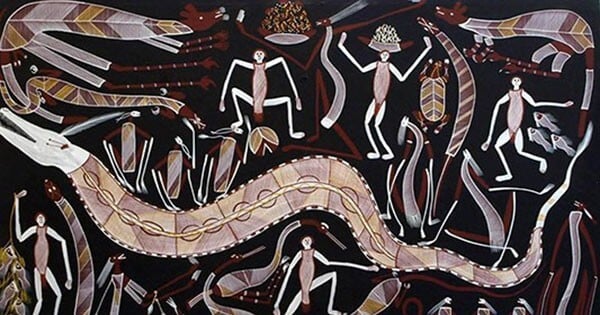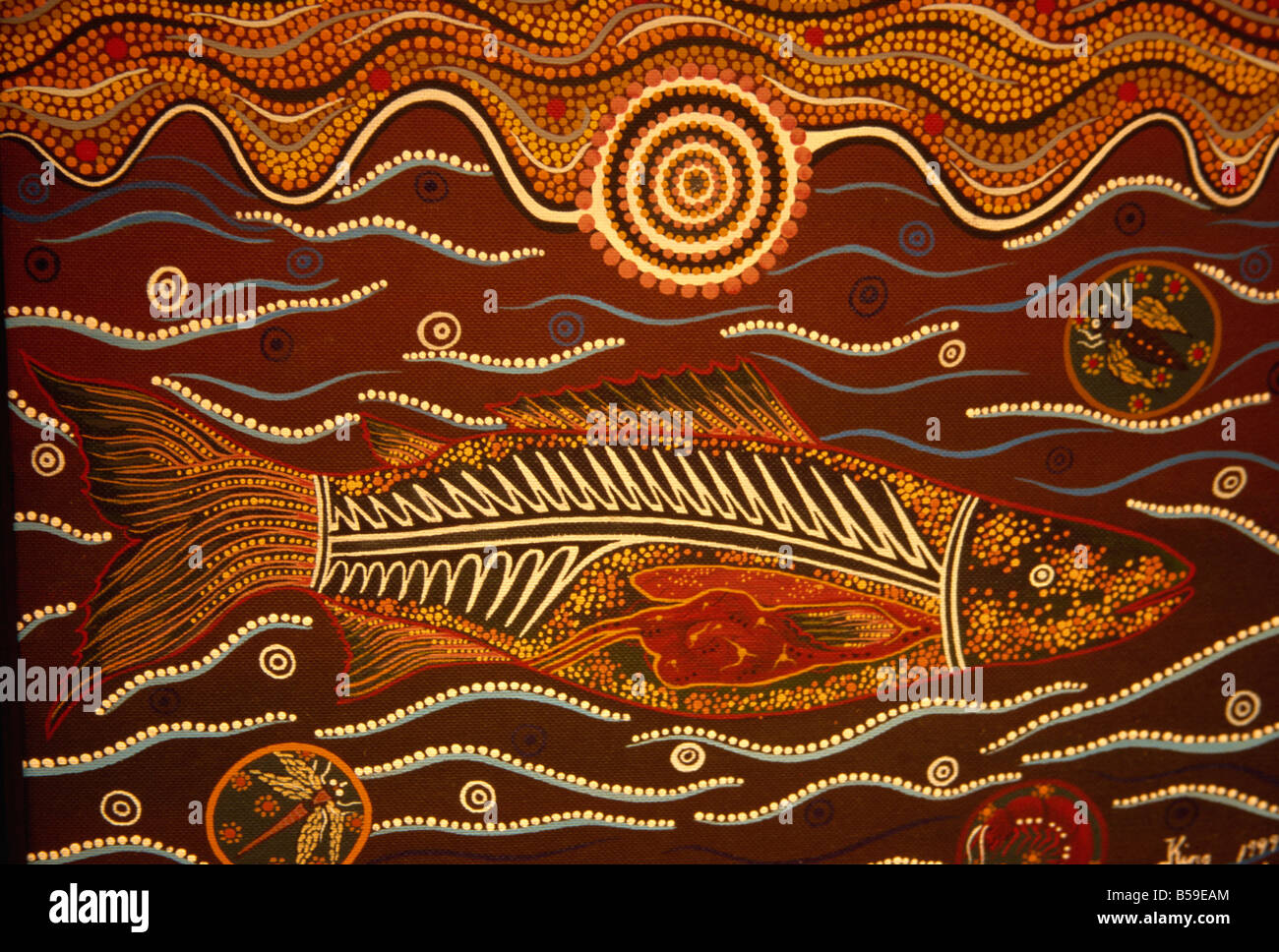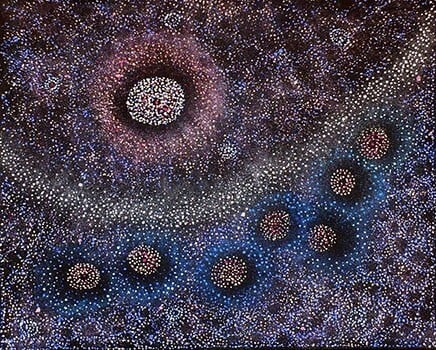The Dreamtime: Unraveling the Tapestry of Aboriginal History
The Dreamtime: Unraveling the Tapestry of Aboriginal History

The Aboriginal Dreamtime, a concept rich in symbolism and profound meaning, stands as the cornerstone of Aboriginal Australian culture. It is more than just a story or a myth; it is a living, breathing reality that shapes their worldview, their connection to the land, and their understanding of the universe. This article delves into the intricacies of the Dreamtime, exploring its significance, key elements, and its enduring relevance in contemporary Aboriginal life.
A Tapestry Woven with Creation and Connection
Related Articles: The Dreamtime: Unraveling the Tapestry of Aboriginal History
- Unveiling The Meaning Behind Australian Aboriginal Names: A Journey Through Culture And Identity
- The Shifting Sands Of Time: Exploring The Names And Lost Cultures Of Generations
- Unveiling The Mysteries: A Deep Dive Into Aboriginal Dreamtime Symbols And Their Meaning
- The Tugagal Totem: Unraveling The Mystery Of The Pacific Northwest’s Mystical Figure
- The Aboriginal Flag: A Tapestry Of Colors, A Symphony Of Meaning
The Dreamtime, also known as "The Dreaming," is a complex and multifaceted concept that encompasses creation, ancestral beings, and the interconnectedness of all things. It is not a linear timeline but rather a timeless realm where the past, present, and future coexist.
The Creation Story: From Chaos to Order
At the heart of the Dreamtime lies the creation story, a narrative that explains the origins of the universe, the land, and all living beings. Ancestral beings, powerful spirits who embody the essence of the natural world, traversed the land, shaping its features, creating life, and establishing the laws that govern the universe. They left behind their footprints, their songs, and their stories, etched into the very fabric of the land.
These ancestral beings, often depicted as animals, humans, or a combination of both, are not merely mythical figures. They are revered as the progenitors of all things, their actions and deeds shaping the landscape and the lives of humans. Their stories serve as a blueprint for Aboriginal life, guiding their understanding of the natural world, their social structures, and their relationship with the land.
The Ancestral Beings: Guardians of the Land
The ancestral beings are the heart and soul of the Dreamtime. They are the creators, the protectors, and the teachers. They are the embodiment of the land itself, their spirits residing in the mountains, rivers, trees, and animals. Each ancestral being has its own story, its own role in the creation, and its own connection to specific places and elements of the natural world.
These stories, passed down through generations through oral traditions, are not merely tales of the past. They are living narratives that connect present-day Aboriginal people to their ancestors and to the land. They serve as a guide for understanding the natural world, for navigating social relationships, and for maintaining a harmonious relationship with the environment.
The Dreamtime: A Timeless Realm

The Dreamtime is not confined to the past. It is a timeless realm that exists alongside the present, influencing the lives of Aboriginal people in the here and now. The Dreamtime is the source of knowledge, wisdom, and cultural identity. It is the foundation upon which Aboriginal culture is built, and it continues to shape their lives today.
The Role of the Land: A Sacred Connection
For Aboriginal people, the land is not merely a resource to be exploited. It is a sacred entity, a living being imbued with the spirits of the ancestors. Their connection to the land is deep and profound, shaped by the stories of the Dreamtime and the actions of the ancestral beings.
The land is a source of life, sustenance, and identity. It is a repository of knowledge, a testament to the creativity of the ancestors, and a place of spiritual connection. The Dreamtime teaches Aboriginal people to respect the land, to care for it, and to live in harmony with its rhythms.
The Dreamtime: A Source of Strength and Resilience

The Dreamtime has provided Aboriginal people with a source of strength and resilience throughout their history. It has helped them to navigate the challenges of colonization, dispossession, and cultural suppression. It has provided them with a sense of identity, a connection to their ancestors, and a belief in their own cultural heritage.
The Dreamtime in Contemporary Aboriginal Life
The Dreamtime remains a vital force in contemporary Aboriginal life. It is reflected in art, music, dance, and storytelling. It is a source of inspiration for contemporary artists, writers, and musicians, and it continues to shape their creative expression.
The Dreamtime is also a crucial element of Aboriginal activism and advocacy. It is used to raise awareness of the ongoing challenges faced by Aboriginal people, to demand justice for past injustices, and to promote self-determination.
The Dreamtime: A Legacy for the Future

The Dreamtime is not a relic of the past. It is a living, breathing reality that continues to shape the lives of Aboriginal people today. It is a testament to their resilience, their creativity, and their deep connection to the land.
The Dreamtime offers a unique perspective on the world, a worldview that emphasizes interconnectedness, respect for the environment, and the importance of cultural heritage. It is a legacy that Aboriginal people are committed to preserving for future generations.
FAQs about Aboriginal Dreamtime History
Q: What is the Dreamtime?
A: The Dreamtime, also known as "The Dreaming," is a complex and multifaceted concept that encompasses creation, ancestral beings, and the interconnectedness of all things. It is a timeless realm where the past, present, and future coexist.
Q: What is the role of ancestral beings in the Dreamtime?
A: Ancestral beings are powerful spirits who embody the essence of the natural world. They are the creators, the protectors, and the teachers of the land. Their stories and actions shape the landscape, the lives of humans, and the laws that govern the universe.
Q: How does the Dreamtime connect to the land?
A: For Aboriginal people, the land is a sacred entity, imbued with the spirits of the ancestors. The Dreamtime teaches respect for the land, care for the environment, and a harmonious relationship with its rhythms.
Q: How is the Dreamtime relevant in contemporary Aboriginal life?
A: The Dreamtime remains a vital force in contemporary Aboriginal life, shaping their art, music, dance, storytelling, activism, and advocacy. It is a source of strength, resilience, and cultural identity.
Q: What are some key elements of the Dreamtime?
A: Key elements of the Dreamtime include the creation story, the ancestral beings, the interconnectedness of all things, the sacredness of the land, and the timeless nature of the Dreamtime itself.
Q: How can I learn more about the Dreamtime?
A: You can learn more about the Dreamtime by engaging with Aboriginal communities, visiting museums and cultural centers, reading books and articles, and attending events that celebrate Aboriginal culture.
Conclusion
The Dreamtime is a powerful and profound concept that offers a unique perspective on the world. It is a testament to the richness and depth of Aboriginal culture, and it continues to shape their lives today. By understanding the Dreamtime, we can gain a deeper appreciation for the wisdom and resilience of Aboriginal people and their deep connection to the land.

Closure
Thus, we hope this article has provided valuable insights into The Dreamtime: Unraveling the Tapestry of Aboriginal History. We appreciate your attention to our article. See you in our next article!


